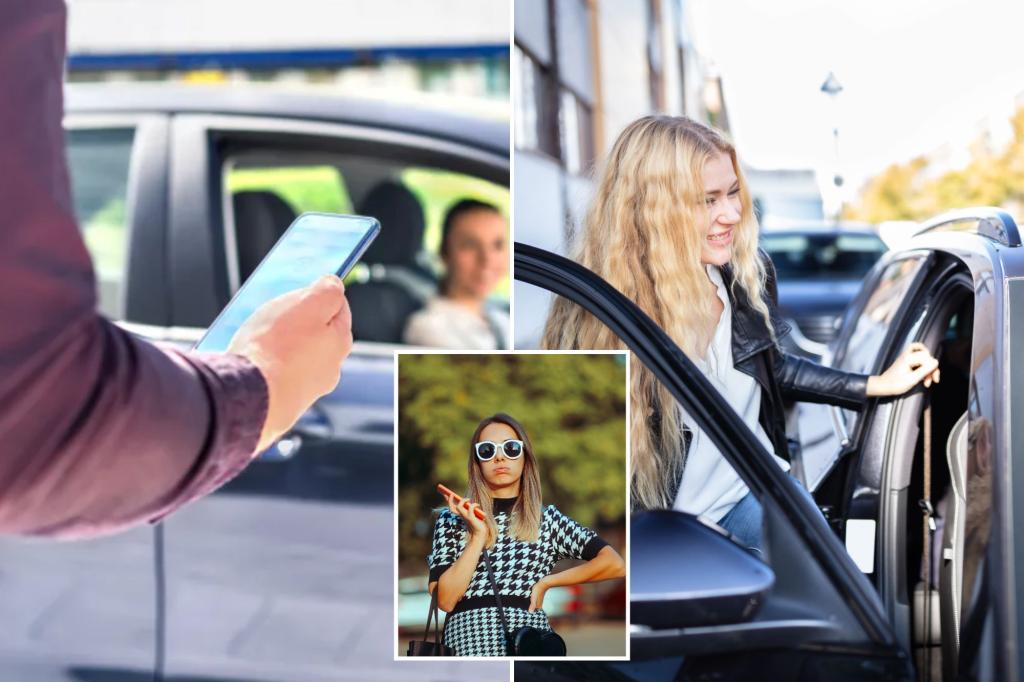The Rideshare Seat Debate: Safety, Paranoia, and Modern Urban Etiquette
In today’s rideshare culture, a seemingly simple question has sparked intense online debate: is it safer to sit in the front passenger seat or the backseat when taking an Uber or Lyft? What began as a casual observation on social media has evolved into a fascinating window into modern safety concerns, urban etiquette, and the ways we navigate trust with strangers in the digital age.
The conversation ignited when a user named Luna M. expressed surprise on X (formerly Twitter) about women choosing the backseat in rideshares, writing: “I always sit in the front. There is nothing I fear more than child lock protection.” Her concern centered on the mechanism allowing drivers to prevent backseat passengers from opening doors from inside—a feature designed for child safety but viewed by some as a potential kidnapping risk. This sparked a divided response across social media platforms. Some users strongly agreed with Luna’s front-seat preference, while others found it baffling, even calling it “wild behavior.” The debate quickly revealed how deeply personal these choices are, often informed by previous experiences, safety education, and individual risk assessment. One user captured the differing philosophies perfectly: “Sitting in the front says ‘I trust you.’ Sitting in the back says ‘I have seen true crime documentaries.’ We are not the same.”
Those favoring the backseat often cite the practical advantage of having multiple exit options and maintaining a professional distance from the driver. “I feel like [the front seat] makes being held at gunpoint easier. I sit behind the driver,” one commenter explained, highlighting how safety calculations can get surprisingly specific. The front-seat defenders, meanwhile, emphasize their ability to more easily grab the steering wheel, access door controls, or even reach the hand brake in an emergency. What’s particularly interesting is how these preferences reflect broader attitudes toward risk management—some passengers prioritize escape options, while others focus on maintaining control of the situation. For many women and vulnerable riders, these aren’t abstract considerations but practical decisions made multiple times weekly in urban environments.
Uber itself has taken a clear position in this debate. The company’s official guidance states: “Whenever possible, sit in the back seat, especially if you’re riding alone.” They explain this recommendation serves dual purposes—ensuring passengers can “safely exit on either side of the vehicle to avoid moving traffic” while also providing “personal space” for both rider and driver. This guidance represents the company’s attempt to standardize safety practices across millions of daily rides globally, though many riders clearly continue making their own risk assessments. The company’s stance reflects not just safety concerns but also professional boundaries in what remains an intimate transaction—being alone in a vehicle with a stranger, often at night, sometimes in unfamiliar areas.
Beyond seating preferences, safety experts have developed a broader rideshare safety protocol that’s increasingly becoming common knowledge. TikTok creator Dannah Eve, who has a background in criminology and psychology, went viral with practical safety advice that transcends the front-seat/backseat debate. Her recommendations include always verifying the license plate before entering a vehicle, making the driver say your name first (rather than asking “Are you here for [your name]?”), and perhaps most interestingly, declining all food or drinks offered by drivers. “Even if the bottled water or snack is sealed,” Eve cautioned, “it’s not worth the risk.” This guidance points to a deeper reality about rideshare culture—that despite the convenience and normalization of these services, many passengers maintain a baseline vigilance throughout their journeys.
Another fundamental piece of rideshare safety advice speaks to how technology itself may create new vulnerabilities: “Stay off your phone. Head up and be aware of what’s going on.” This recommendation highlights the irony that the same smartphones that enable rideshare services can also make us more vulnerable during rides if they distract us from our surroundings. The advice to remain present and alert acknowledges the uncomfortable truth that safety in these situations requires active participation—we can’t simply outsource our security to app ratings, company policies, or background checks. In cities worldwide, rideshare passengers perform this subtle balancing act daily: using technology to increase convenience while maintaining enough vigilance to ensure personal safety.
When we step back from the specifics of the seating debate, what emerges is a portrait of modern urban navigation that would have been unimaginable just fifteen years ago. Millions of people now regularly enter vehicles with strangers they’ve summoned through apps, making split-second trust decisions based on star ratings, profile photos, and company brands. The front-seat versus backseat debate reveals how we’re collectively developing new social norms and safety protocols for situations that didn’t previously exist at this scale. While preferences differ, the underlying goal remains consistent—maintaining personal safety while benefiting from the convenience of rideshare technology. Perhaps the wisest approach acknowledges there’s no one-size-fits-all answer. Whether riding shotgun or sitting behind the driver, the best protection comes from staying alert, trusting your instincts, and remembering that in the modern rideshare experience, a healthy dose of caution is always your most reliable companion.


